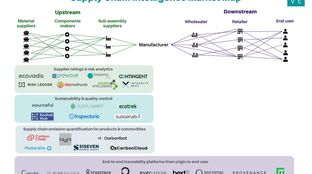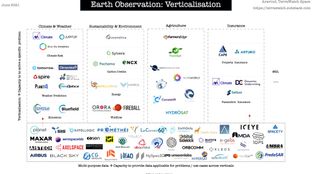
The missing link to net zero
Closing the loop on decarbonized & resilient supply chains with Energy Impact Partners' Nina Litman
Within the past month, ClimateView, The Climate Service, and SINAI Technologies have raised capital to develop software tools for collecting and managing climate data.
In the time of COVID-19, we’ve become used to seeing data visualizations of the virus’s expected course tied with urges to do our part in “flattening the curve”. That same rise of interest in data visualization and reporting tools is also being applied towards another global threat – climate change. Within the past month, ClimateView, The Climate Service, and SINAI Technologies have raised capital to develop software tools for collecting and managing climate data.
As 2020 marks the crucial year for nations under the Paris Climate Accord to announce their climate plans, ClimateView aims to develop a toolkit for cities to organize and execute their climate transition. Environmental policy making has historically been hampered by planning-intensive processes lacking data visualization tools and projections. ClimateView’s software avoids “reinventing the wheel” by compiling development, emissions, and urban planning data to enable the sharing of best practices and benchmarking among cities around the world.
While ClimateView focuses on cities, other startups are designing climate accounting tools targeted towards corporations. The Climate Service bases its Climanomics® risk analytics system on the framework developed by the Task Force on Climate-Related Financial Disclosures. Similarly, SINAI Technologies helps companies understand their emissions by aggregating different reporting and data related to emissions in an accessible, easy-to-monitor format. Founder Maria Fujihara describes the service as “kind of like doing financial analysis, but doing the environmental analysis in addition.”
Comprehensive climate visualization and reporting is key to both public and private policy emissions reduction efforts in an era of materializing climate effects. The startups funded this month aim to address glaring gaps in climate transition planning: easy access to accurate, global climate data, best practices to inform future courses of action, and benchmarks against which to track progress and compare globally.
Interested in more content like this? Subscribe to our weekly newsletter on Climate Tech below!

Closing the loop on decarbonized & resilient supply chains with Energy Impact Partners' Nina Litman

The new business of seeing climate from space

How supply chain traceability leads us to Net Zero